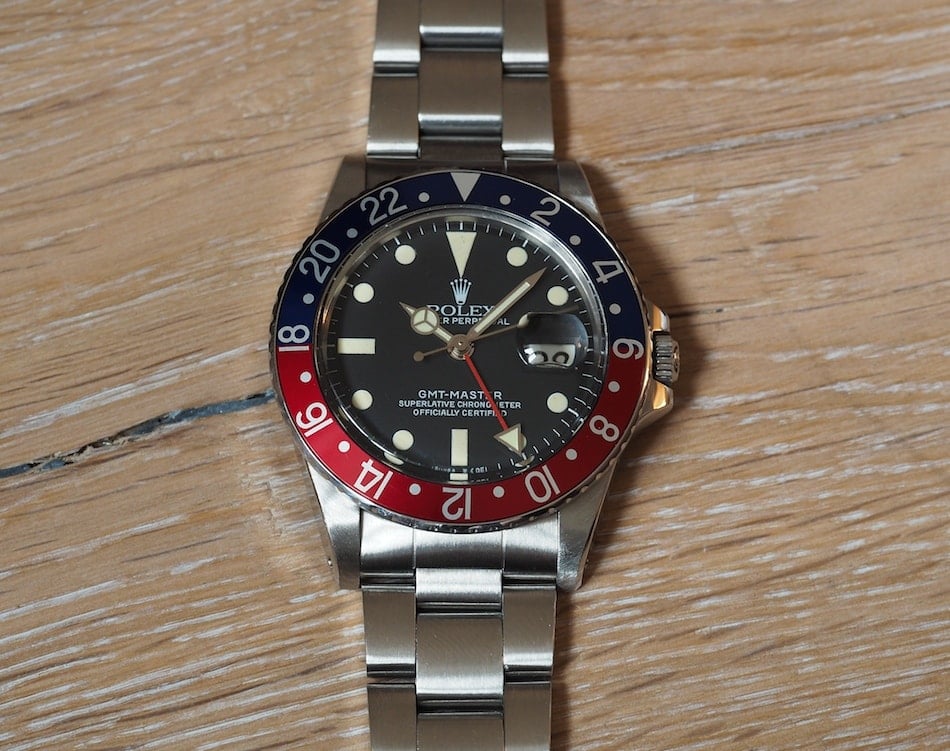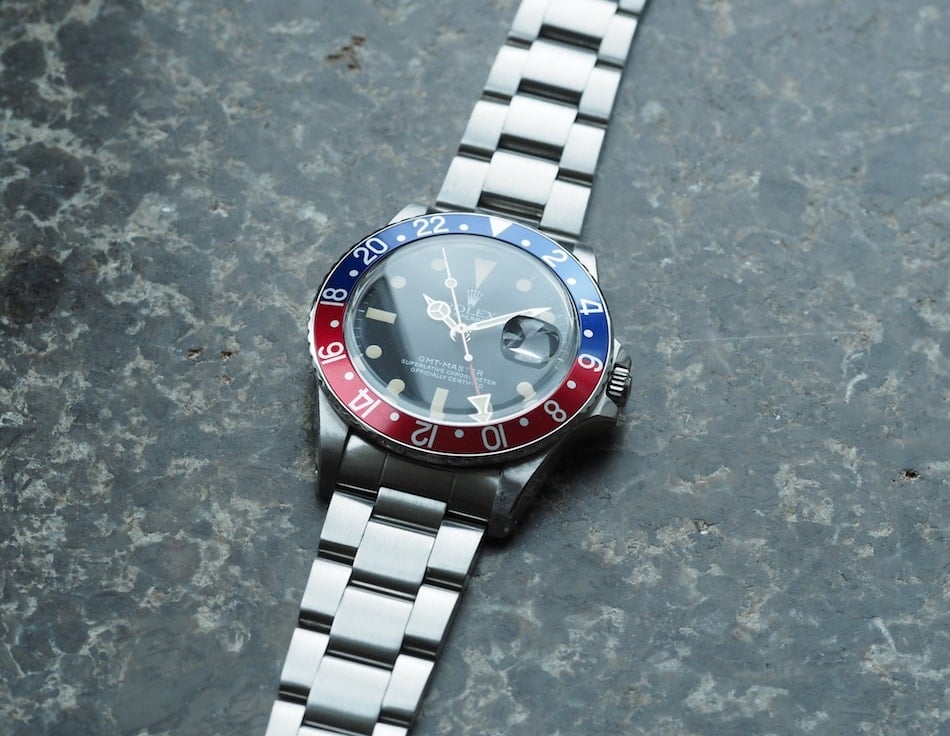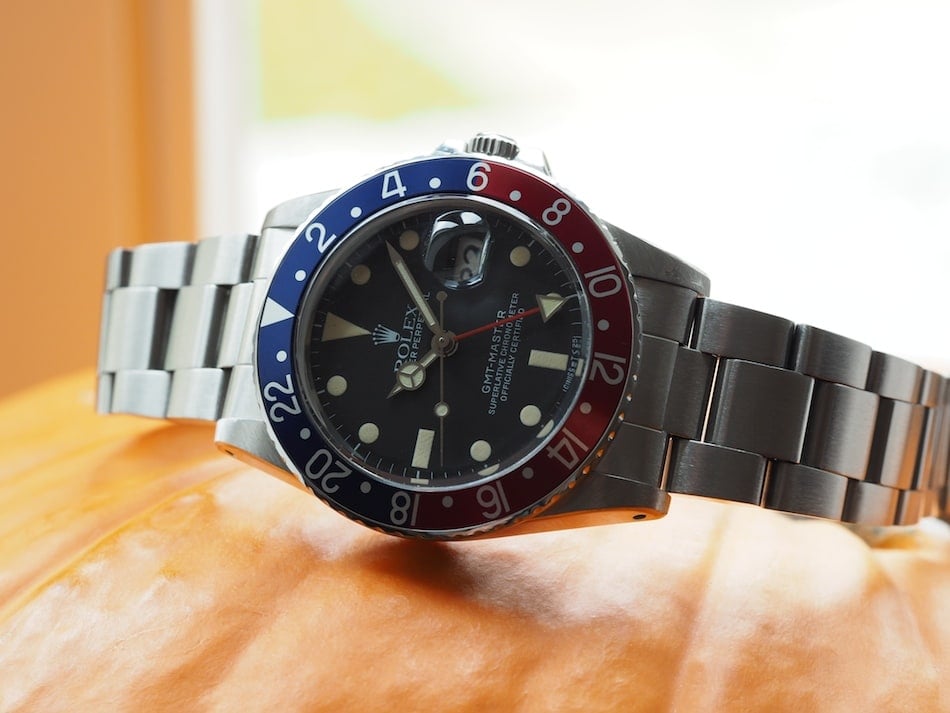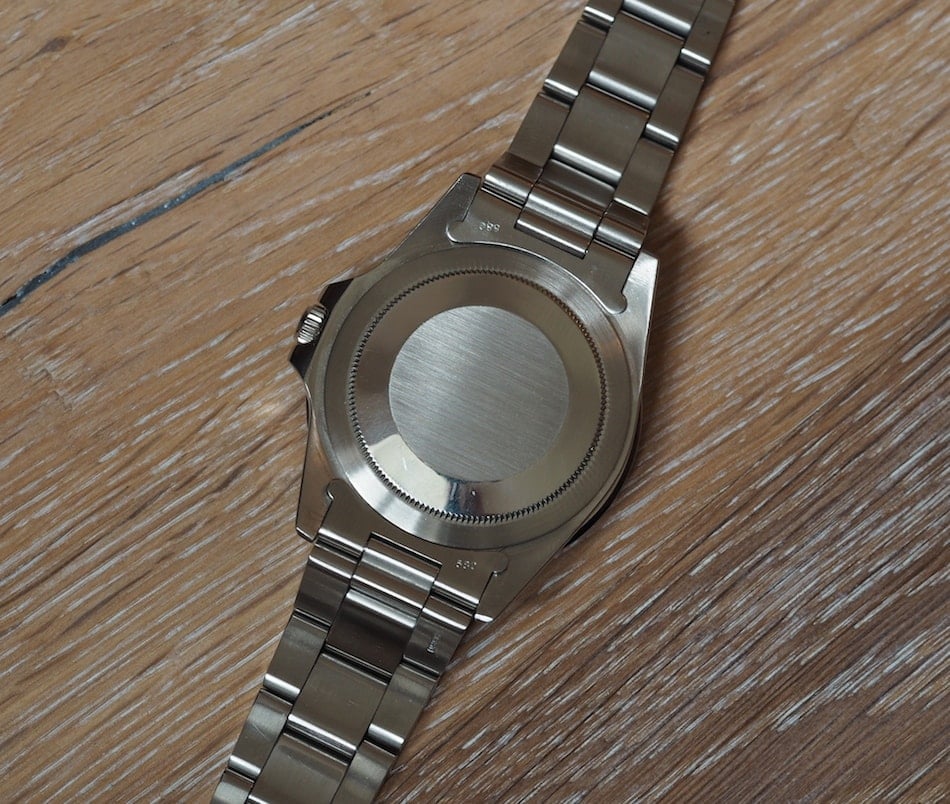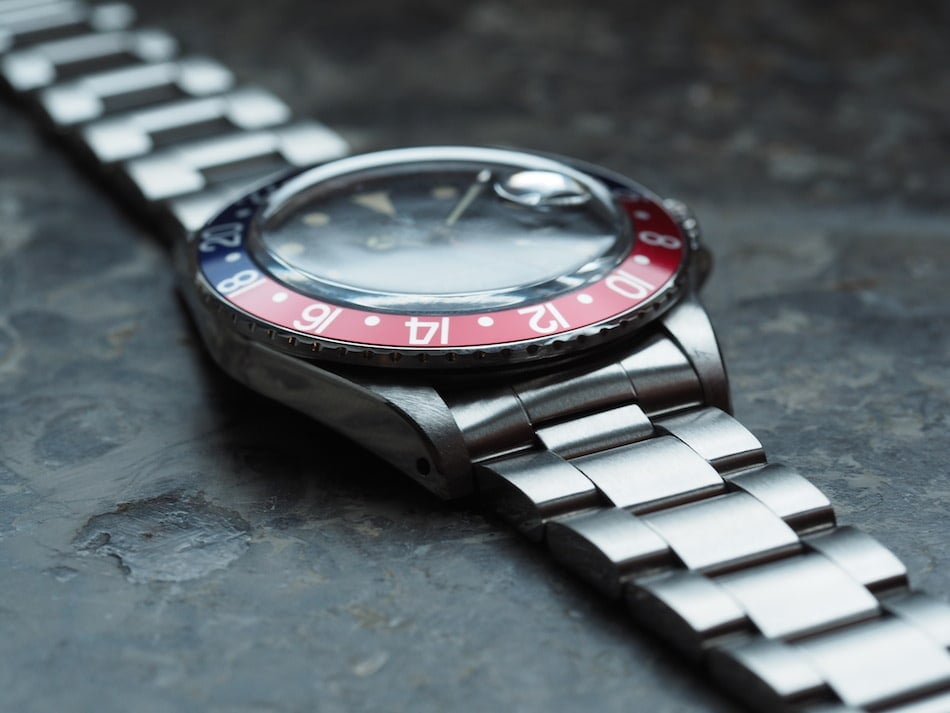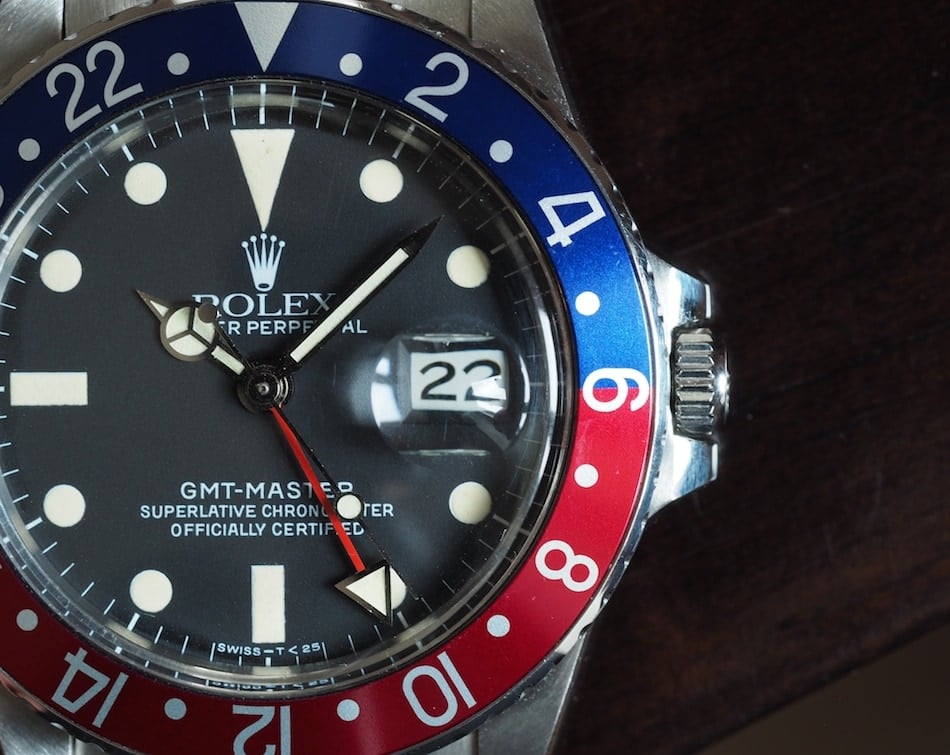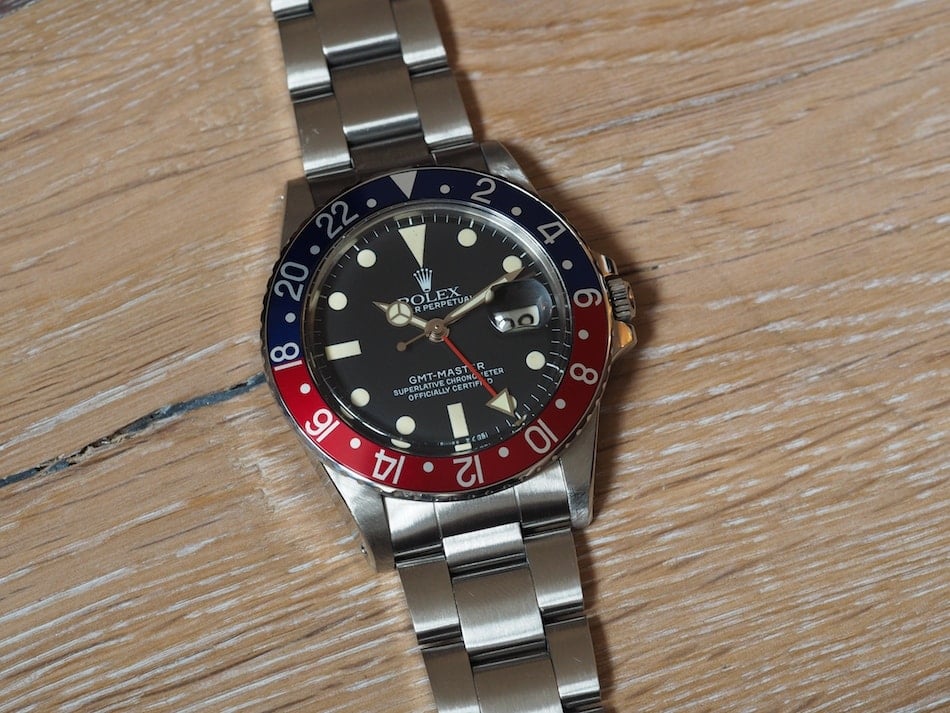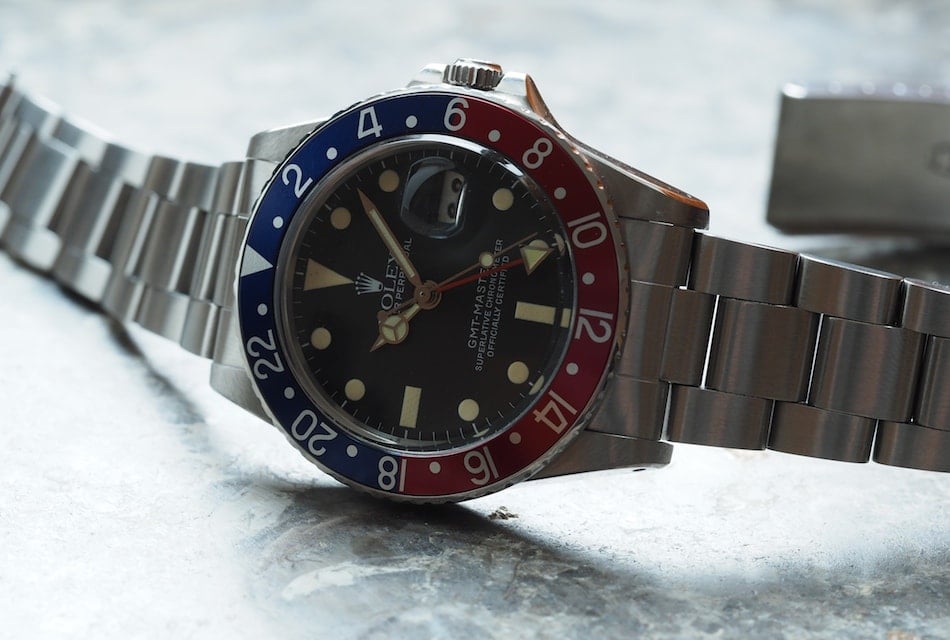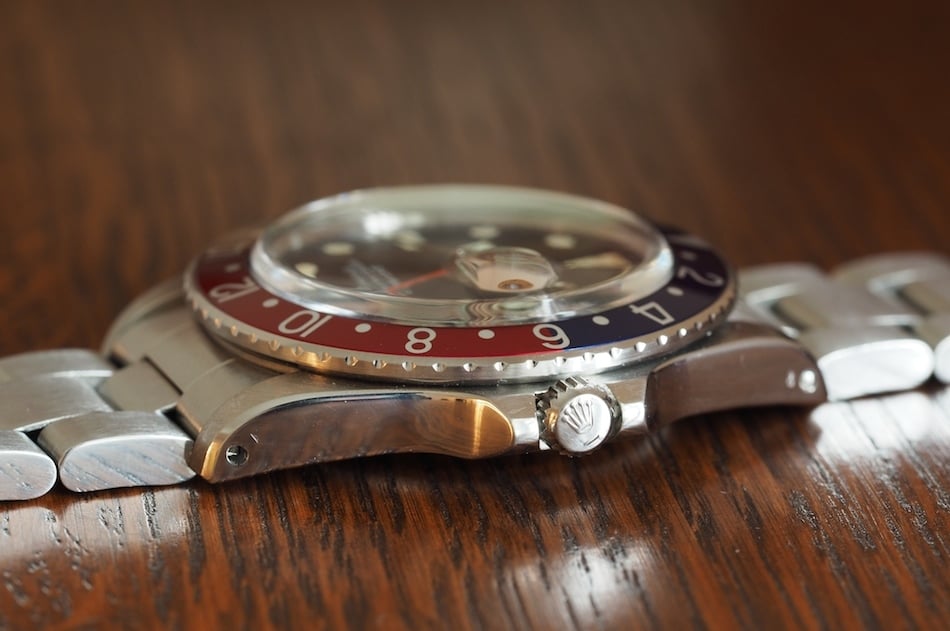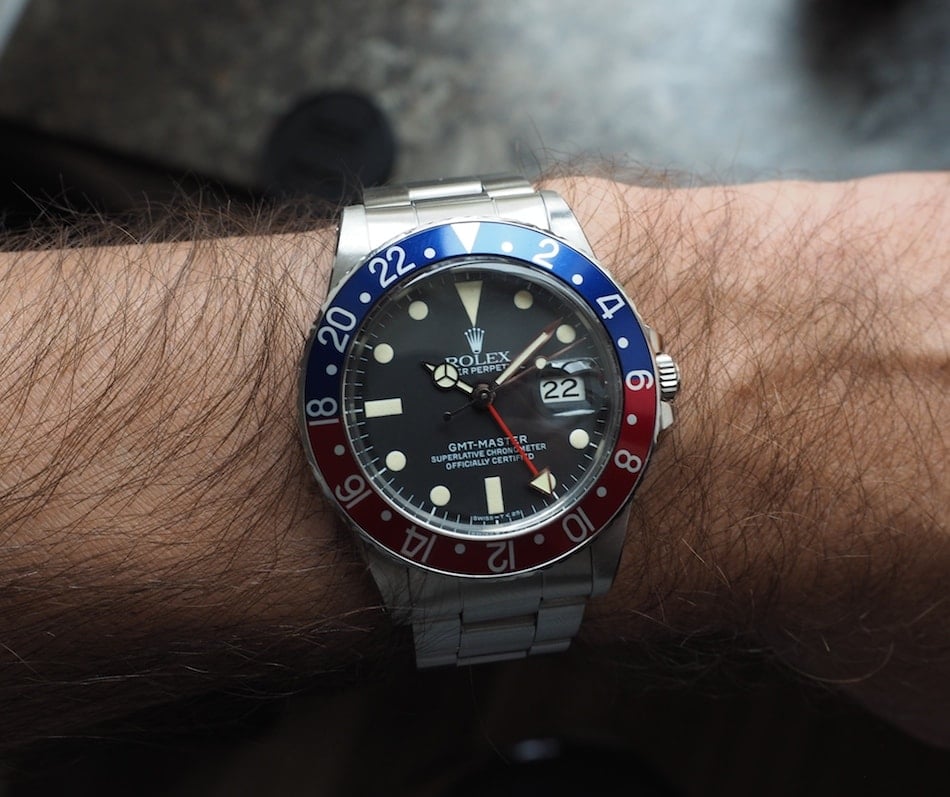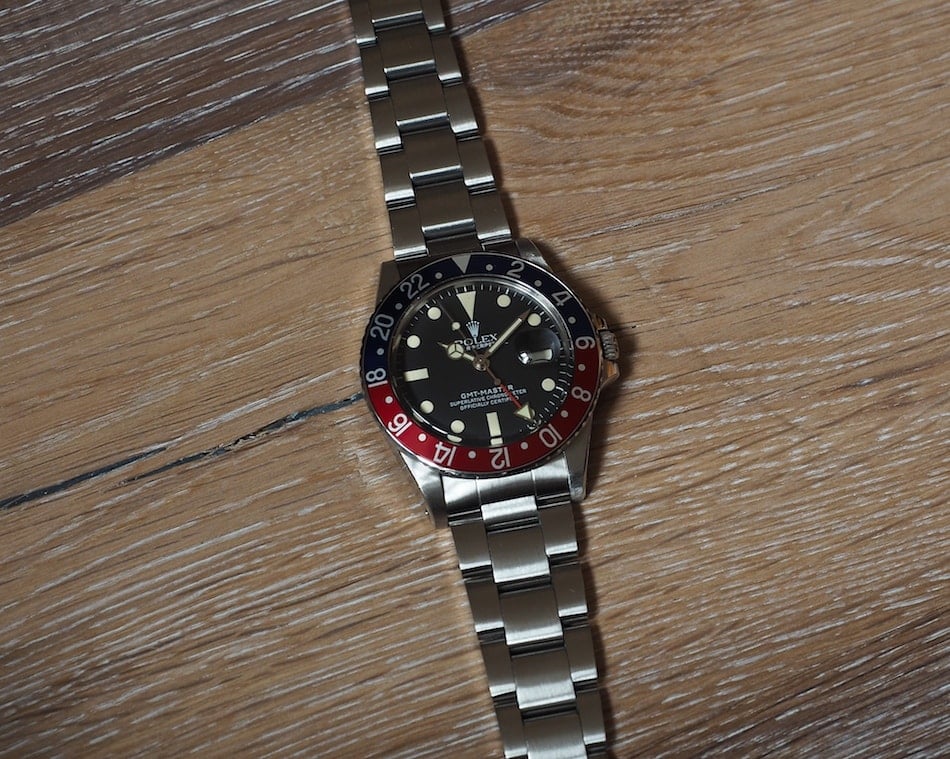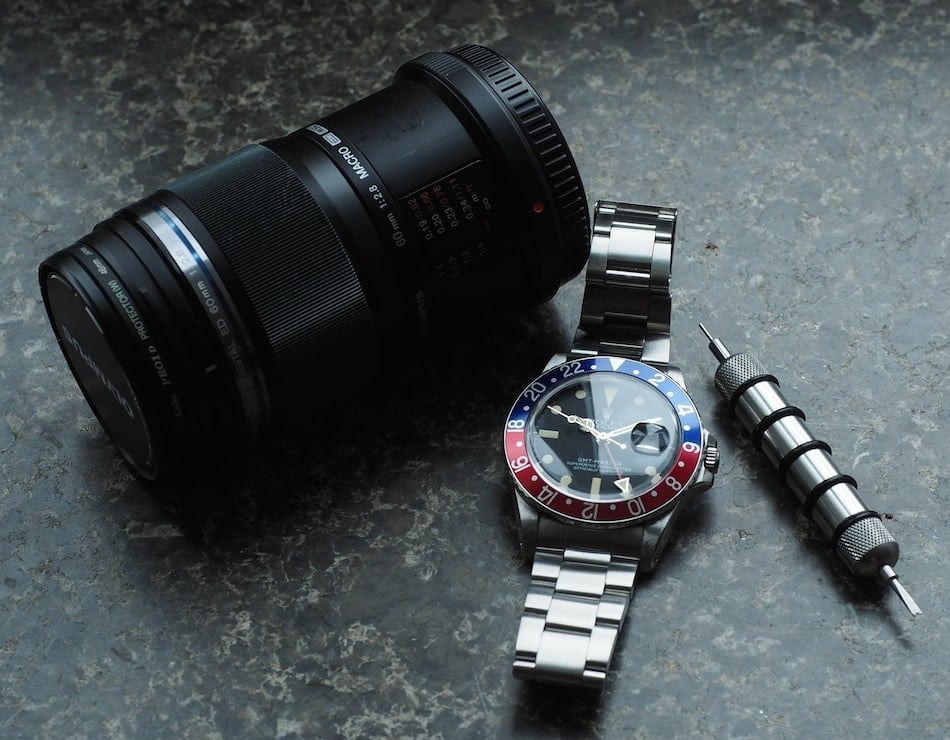#TBT A Matte Dial Rolex GMT-Master 16750
New Coke, the Porsche 996, and Star Wars: The Phantom Menace – all things that, upon introduction, were meant to be better than their predecessors. On paper, they probably were or perhaps they tested well amongst some group of people thought to encompass the product’s target market. But…we know what people ultimately thought. On the other hand, there are countless examples where a follow-up product or idea marks a vast improvement over the prior generation and the marketplace responds positively. Just consider about every piece of electronic or connected technology you own and how the bulk of these items have brought marked improvement, usability, and dependability with each new rendition. With watches, however, the sentiment when it comes to change is extremely murky. And so, today, we take a look at a perfect example of change in the Rolex GMT-Master 16750.
The Rolex GMT-Master 16750 is a Transitional
Called a transitional, by some, the Rolex GMT-Master 16750 has long served as the redheaded stepchild within the vintage GMT series. Admittedly, when released in 1979/1980 as the follow up to the lauded 1675, new buyers likely welcomed the new model and the convenience it offered. However, when it comes to collectors, the model is viewed as a bit of an oddity. Honestly, the 16750 had one hell of an act to follow. The 1675, whether in gilt or matte-dialed form, was produced from 1959 until being replaced by the 16750. Like many of the sport models we’ve covered from Rolex – the Explorer 1016 and the Submariner 1680/5512/5513 come to mind – the 1675 GMT hung around for a long time. In fact, with today’s constant need for something new, it’s amazing to look back upon the life cycles formerly enjoyed by Rolex’s sport models and that they essentially reigned supreme for so long despite so little change.
A Keen Eye Knows the Difference Between a 1675 and 16750
And so when the Rolex GMT-Master 16750 was released, perhaps it’s not surprising that the first several years of production (call it the first 4-5) made do with a watch that looked damn near identical to its forbearer. Perhaps Rolex didn’t want to rock the boat or perhaps the glossy dials that were to come around 1984/1985 just weren’t ready for prime time – it seems the dials weren’t ready in the mid-80’s either as many cracked and gained the “spider web” descriptor. Whatever the case, there’s little sign that the new watch market had anything but love for the new 16750 upon its release because, as mentioned, it offered improvements and looked so familiar. The collector set, though, has only just started to come around on this watch. Before we talk about that, and ramble on about a number of other sub topics, what the heck is a 16750?
3 Technical Upgrades vs. the 1675
The Rolex GMT-Master 16750 is a rather simple beast to understand. It contains 3 specific technical upgrades when compared to the 1675. First, the model ushered in the use of the new 3075 caliber, which runs at a higher beat of 28,800 bph (the 1575 before ran at 19,800). So, we have a gain in accuracy plus, by most accounts, a more robust and modern movement (although the 1575 is regarded as bulletproof). Additionally, and most significantly, the 16750 added a quick set date function. Finally, perhaps through upgraded gasket employment, the 16750 was rated to 100M of water resistance compared to 50M on the 1675. Aside from that, there were no differences. In fact, aside from slight differences to the printed crown on the dial and micro-alignment of some font, about 99% of people would need to listen to the speedy movement or pull the crown out of a matte-dialed 16750 in order to tell that it’s not a 1675. (The other 1% would realize that order of hands stacking differs – the 16750 places the GMT hand on top of the hour hand and it actually lies closes to the dial on a 1675) So, if we are talking about nearly identical watches, why does the 16750 receive ho-hum treatment?
Gaining Recognition
When it comes to vintage Rolex, it’s a picky crowd indeed. Generally, if we’re referring to sports watches, the older Rolexes are more coveted. Plus, you have your collectors out there who simply want a 1675 because it’s an iconic model and they were made for so long – non quick set date and all. And, to be fair, the longevity point is a hard one to argue based on nostalgia alone and it becomes even harder when one delves into rare 1675 variants such as the radial dials or early gilt models. But where the Rolex GMT-Master 16750 has recently picked up the pace in terms of value and interest level lies in the ability to find a nice, honest piece. You see, many of us, myself included, got tired of looking for a 1675 in decent condition. And now, after years of trailing behind late model 1675’s, it seems that matte dialed (and even the applied marker versions) 16750’s have gained in popularity.
The 1675X Series Has Me Hooked
If you’re a fan of #TBT, you’ve possibly read my reviews on both the Rolex bi-color GMT 16753 and 18K gold 16758. Needless to say, those watches “hooked” me and they vie for, and receive, serious time on my wrist. I find them practical to use with their quick set date function and because I travel a lot, the second time zone is useful. Plus, I prefer the functionality (and warmer vintage looks) to the later 16710 with quickset hour hand because the 3075 movement, with its non-independent arrow hand, still makes one use the rotating bezel. I prefer this bezel interaction to the fact that the 16710 and its movement have rendered the bezel as almost purely ornamental. So, why then, despite telling everyone that the brown-dialed, gold-bearing models had me sated, did I go after the Rolex GMT-Master 16750? It’s the combination of that wonderfully plain dial, the nice warm acrylic crystal, and that damn bezel. Oh, and I saw the 1675 owned by Balazs at Baselworld this year and that only fueled my interest.
That Damn Bezel…
A vintage Pepsi bezel is swoon worthy, whether on a 1675 or a 16750. There’s just something about the color combination and when large, fattish font numbers are a part of the mix, they become iconic. Pick your level of fading and there’s likely a bezel for sale out there that meets your taste. From fuchsia to light blue, there are truly an infinite number of ways these bezels grow older – some more naturally than others, Italian friends… 😉 One bezel may delight one person while turning off another and that’s a funny thing with a vintage GMT. This small aluminum insert, to me at least, can make me turn either towards or away from a vintage GMT. Depending on my first blush feelings about a bezel, the entire watch often becomes a take it or leave it piece. Yes, it’s an amazing slice of aluminum.
Vintage GMT’s are Hot
On a broader scale, the big Rolex pilot’s watch that has played second fiddle to the Submariner for so long is underappreciated no more. Vintage GMT’s, in most guises, are fiery hot and that includes models all the way through the 16710. When talking to dealers, GMT’s are about the hottest mainstream vintage watch going and finding a decent vintage one has become difficult. Yes, there are many out there, but so many have either been subject to a heavy hand at the polishing wheel or have all kinds of replacement parts such as hands or dials. And then there’s the bezel and the rabbit holes that exist when ensuring one is real, correct, or even authentic. Why GMT’s are now (and have been for about 2 years) the big ticket is a great question. Perhaps the Submariner market overheated or perhaps the often colorful aged bezel, in concert with that arrow hand, on the GMT displays more of an “authentic” and “lived in” look desired by those who collect and wear today. Could it also be that infinitely more of us fly, or travel, than dive? A GMT provides a more natural opportunity to “use” your vintage watch when compared to something like a Sub.
Buying the Best Your Budget Allows
I found this Rolex GMT-Master 16750 with the Davidoff Brothers. While that might sound a bit boring – no, I didn’t cajole Chuck Yeager into giving me one nor did I sweet-talk some widow of a former test USAF test pilot into selling a one owner watch – I wanted a trustworthy, quality watch without stories. I had grown really tired of the typical “here’s a $12K 1675 that’s all original except for the newer bracelet and Rolex service Super-LumiNova hands” advertisements. And then there were the ads showing watches where a lug looked practical enough to use on my teeth after eating a healthy portion of pulled pork or BBQ brisket. No thanks…keep your $14K gem with a Mark X dial that doesn’t fit the serial range. So, I finally followed my own advice and did what I tell others to do and that’s to buy the best watch that my budget allowed. This led me to the 16750 you see here and I’m nothing but pleased.
Originality is Key
As you can see, the watch is in beautiful condition. The case shows a sympathetic polish, but it was well executed and there’s plenty of thickness remaining. The bezel, on the other hand, looks unblemished and bright. The hands are original and display none of the corrosion that often plagues the Rolex GMT-Master 16750 – and often led to non-tritium replacements. This piece sports an 8.1M serial number, which puts it around 1984, and that makes it fitting for a matte dial. Matte-dialed pieces like this are thought to have run up through the 8.4M range before switching to the glossy dials with applied indices. It’s often noted, sadly, that matte dialed pieces received glossy dials when going in for a service.
GMT’s are Slimmer than Subs
A matte-dialed Rolex GMT-Master 16750 looks gorgeous on the wrist. When I was a young kid, one of my Dad’s friends wore an older matte dial GMT (I’m not sure which model it was) and I always thought it was a Submariner with a funny bezel. How wrong I was because the GMT is quite a slim watch (roughly 14mm) by comparison despite having a diameter similar to the Sub (40mm). It sits close to the wrist and disappears with ease underneath a shirt. Whether worn on a Jubilee or the workhorse 78360 Oyster (one of the most boringly perfect bracelets ever created in my opinion), the watch is a looker. Sure, they look great on a brown strap, but if one owns a Rolex bracelet and it’s not subject to damage, why wear anything but metal?
Pricing for a nice Rolex GMT-Master 16750 on the rise
As mentioned, finding a good Rolex GMT-Master 16750 isn’t quite as challenging as finding a decent 1675, but it’s no longer a cakewalk. Whereas a year or two ago these could be found for around $7,000, times have changed. Assume north of $9,000 for something truly respectable and crossing the $10,000 mark is now routine. Amazing. For those pieces with boxes and papers, keep adding to the tally. And then there’s the whole bezel hysteria – I won’t even begin to go down that path as I find the $2,000 and above asking prices ridiculous and I’m always about skeptical of some of those pieces that seem to exhibit pseudo aging. As always, with Rolex, I’d suggest buying the seller and overspending a bit on something that truly satisfies you because compromise will only leave you with regret.
There’s a reason why most of us on the Fratello team own or have owned either a 1675 or 16750; it’s a great looking and practical watch with some aviation history to boot. For me, the Rolex GMT-Master 16750 represents a vintage watch that I could wear everyday and to about any occasion (naturally, I won’t wear it everyday). It can take a beating and fits beautifully. Better or worse than a 1675? That’s probably not the right question to ask. Instead, I’d say that it’s highly worthy in its own right.
An overview of the Rolex GMT-Master history can be found here.

